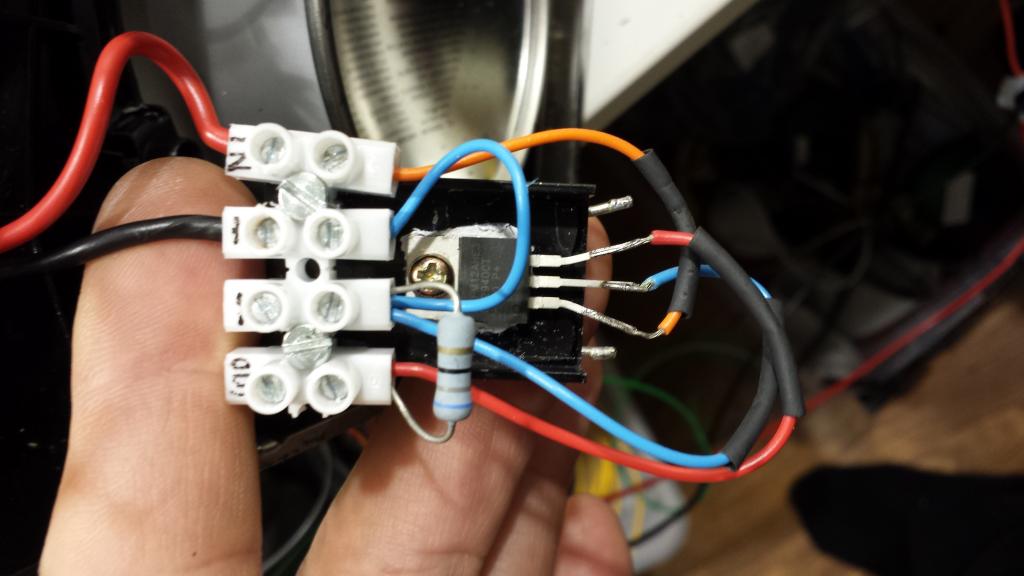LM2940 drives me crazy
 Erlend
Posts: 612
Erlend
Posts: 612
I just needed to hook up a voltage regulator - real simple - I thought. I've done this a hundred times before. But - what I get is not the 5V, but around 9V with a small load resistor, or around 11V without. What is this? I turns me crazy!
I did try with two 47uF capacitors over the input and output (in case of instability issues) but with no change. Input voltage is 13.6VDC.
This is just too simple. I feel stupid.
Erlend
I did try with two 47uF capacitors over the input and output (in case of instability issues) but with no change. Input voltage is 13.6VDC.
This is just too simple. I feel stupid.
Erlend



Comments
I did first try 47uF's over input and output, but I must have had a lousy contact or something, because when I now did as RDL said, and put on a Cout (still 47uF), the voltage dropped down to nice 5V : )
The good old 7805 were never that finicky, were they?
Erlend
btw, I really need something beefier - 5A or even 10A - and I found some automitve modules on €bay, but does anyoune have a good recommendation?
Erlend
So you really do have pay close attention the the regulator's datasheet.
-Phil
For the requirement, to bring a 12V nominal battery voltage down to 5V at 5A or 10A, a switcher would be the way to go, a module. I don't have a specific suggestion.
Of course, if you want to regulate a battery source for 10amps, a different approach is needed. But it is still a switching regulator of some sort -- not a linear device.
I see you mention 13.6 VDC input. If that is from an automotive source, it will be higher during charging, about 14.2 VDC. And you more than likely want some cleanup of your power input to avoid spikes and noise from the automotive power source, before you actually regulate the voltage with any precision.
Generally, blocking anything that gets over about 20 volts prevents potential damage of your regulation circuit.
The LM2940 actually was designed to provide power in an automotive environment and has a lot of features that the LM7805 lacked. LDO is important for automotive instabilites, and so is reverse polarity protection. Thermal shutdown is handy too.
http://forums.parallax.com/showthread.php/151631-Steady-12V-from-car-cig-lighter-socket-how-to
Mainly I need the 5V heavy current for driving an igniter coil, which means it does not need to be clean, nor continous load capable. Maybe I will tap the same to step down further to 3.3V for the propeller and stuff too, but maybe not. I suspect that coil will generate a lot of EM noise, so it may be better to keep it separate.
Erlend
Loopy - both TI (TPS7-series) and Microsemi (LX8-series) offer linear regulators in excess of 3A with Microsemi's going as high as 10A.
Hmmm.. Can one actually buy these in small quantity? Or are these just part of a catalog of device that one must order 1000 or more to buy?
Sure. I didn't check Digi-Key, but Mouser had a bunch of the TPS7 series (a couple were 7.5 amp versions), and several types of the LM338. Hundreds and hundreds in stock, all available in singles if that's what you need.